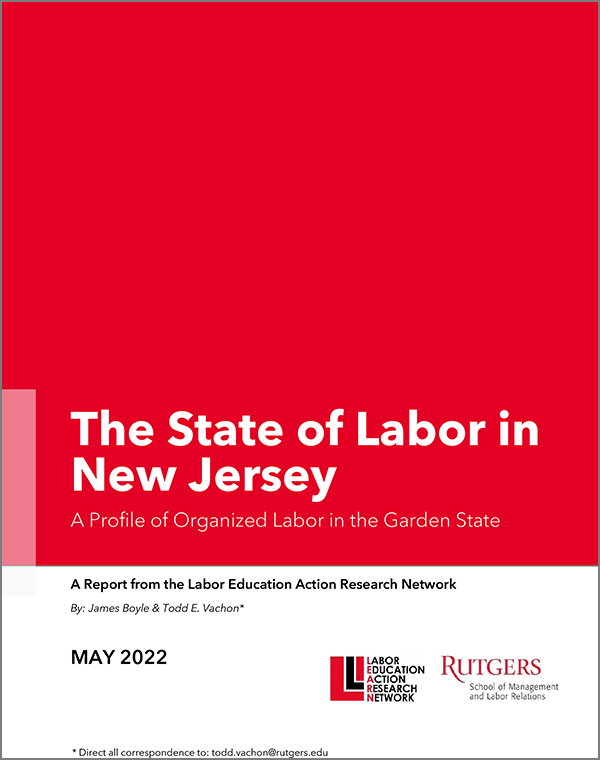
 PISCATAWAY, N.J. (May 3, 2022) – New Jersey still ranks near the top on union membership.
PISCATAWAY, N.J. (May 3, 2022) – New Jersey still ranks near the top on union membership.
A new report by the Labor Education Action Research Network (LEARN) at Rutgers University finds the Garden State’s unionization rate increased slightly during the economic upheaval and worker unrest of the last two years, outperforming 44 other states.
The long-range outlook depends on boosting union membership in the private sector, which has proven difficult in the U.S. for decades, but the recent organizing victories by Starbucks workers in Hopewell, Hamilton, and Summit offer glimmers of hope for the labor movement.
“New Jersey is still a union state,” said LEARN Director Todd Vachon, an Assistant Professor in the Rutgers School of Management and Labor Relations. “We’ve always had a high unionization rate among teachers, police officers, firefighters, and construction workers. That hasn’t changed. But after the pandemic and two years of worker unrest, we’re seeing a resurgence in labor organizing in the service industry, with younger workers at the forefront.”
Researchers analyzed 36 months of federal data covering January 2019 through December 2021 to chart unionization trends. Their report, The State of Labor in New Jersey, revealed:
- New Jersey’s unionization rate increased 0.66% to a three-year average of 16.09%. The national unionization rate currently stands at just 10.3%.
- We rank 6th in union density, trailing only Hawaii, New York, Washington, Oregon, and Minnesota. South Carolina ranks last.
- Public sector unionization is up 3.33% to a three-year average of 59.63%. Most of these are white-collar workers, including teachers and healthcare professionals.
- Private sector unionization remains low at 8.3% though higher than the national average. Blue-collar jobs, such as construction, are the most highly unionized in this sector.
- Before the pandemic, a majority of New Jersey’s union members were women. Men have now pulled even because so many moms left the workforce.
- The overall unionization rate among Black workers (20.84%) is higher than all other demographic groups and nearly double the national average, but it is highly gendered.
- Black men saw a 3.65% gain in union density, while Black women saw a 3.22% loss. Hispanic moms had the biggest loss overall at 7%.
The researchers also analyzed earnings data, finding that union members earned 21% higher wages than non-union workers during the pandemic. On average, full-time workers earned 10% more and part-time workers earned 53% more. These stats do not account for the full range of factors that may shape wage differences across occupations and demographic groups, but they suggest the “union wage premium” remains impactful.
“Unions still deliver the goods in terms of higher wages and better working conditions,” Vachon said. “The research shows that women, people of color, and younger workers see the biggest rise in wages with a union contract. The ongoing labor shortage gives them even more leverage to make demands.”
Vachon and James Boyle, a graduate student in the Rutgers School of Management and Labor Relations, co-authored the report. Their research comes at a time of labor resurgence not seen since the 1930s.
Workers at 47 Starbucks stores in 17 states, including the Hopewell, Hamilton, and Summit stores in New Jersey, have voted to unionize with Starbucks Workers United. Workers at an Amazon facility in neighboring Staten Island voted last month to join the nascent Amazon Labor Union, creating the e-commerce giant’s first unionized workplace. And hundreds of other union elections are coming, with the number of petitions jumping 57% in the first half of the fiscal year.
Press Contact
Steve Flamisch
Rutgers School of Management and Labor Relations
848.252.9011 (cell)
steve.flamisch@smlr.rutgers.edu
About the School
The Rutgers School of Management and Labor Relations (SMLR) is the world’s leading source of expertise on managing and representing workers, designing effective organizations, and building strong employment relationships.
###


